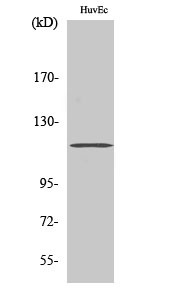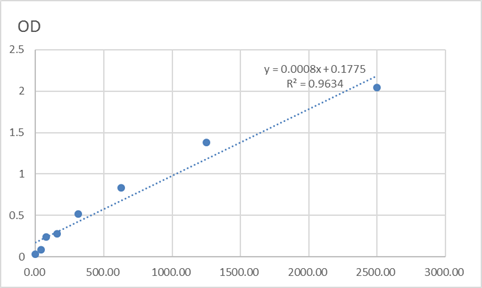Total ST18 Cell-Based Colorimetric ELISA Kit
- Catalog No.:KA3469C
- Applications:ELISA
- Reactivity:Human
- Gene Name:
- ST18
- Human Gene Id:
- 9705
- Human Swiss Prot No:
- O60284
- Mouse Swiss Prot No:
- Q80TY4
- Storage Stability:
- 2-8°C/6 months
- Other Name:
- Suppression of tumorigenicity 18 protein (Zinc finger protein 387)
- Detection Method:
- Colorimetric
- Background:
- function:Repressor that binds to DNA sequences containing a bipartite element consisting of a direct repeat of the sequence 5'-AAAGTTT-3' separated by 2-9 nucleotides. Represses basal transcription activity from target promoters (By similarity). Inhibits colony formation in cultured breast cancer cells.,similarity:Contains 6 C2HC-type zinc fingers.,tissue specificity:Detected at low levels in heart, liver, kidney, skeletal muscel, pancreas, testis, ovary and prostate. Detected at even lower levels in mammary epithelial cells and breast cancer cells.,
- Function:
- negative regulation of transcription from RNA polymerase II promoter, transcription, regulation of transcription, DNA-dependent, regulation of transcription from RNA polymerase II promoter, negative regulation of biosynthetic process,negative regulation of macromolecule biosynthetic process, negative regulation of macromolecule metabolic process,negative regulation of gene expression, negative regulation of transcription, negative regulation of cellular biosynthetic process, regulation of transcription, negative regulation of transcription, DNA-dependent, negative regulation of nucleobase, nucleoside, nucleotide and nucleic acid metabolic process, negative regulation of nitrogen compound metabolic process, regulation of RNA metabolic process, negative regulation of RNA metabolic process,
- Subcellular Location:
- Nucleus .
- Expression:
- Detected at low levels in heart, liver, kidney, skeletal muscle, pancreas, testis, ovary and prostate. Detected at even lower levels in mammary epithelial cells and breast cancer cells.
- June 19-2018
- WESTERN IMMUNOBLOTTING PROTOCOL
- June 19-2018
- IMMUNOHISTOCHEMISTRY-PARAFFIN PROTOCOL
- June 19-2018
- IMMUNOFLUORESCENCE PROTOCOL
- September 08-2020
- FLOW-CYTOMEYRT-PROTOCOL
- May 20-2022
- Cell-Based ELISA│解您多样本WB检测之困扰
- July 13-2018
- CELL-BASED-ELISA-PROTOCOL-FOR-ACETYL-PROTEIN
- July 13-2018
- CELL-BASED-ELISA-PROTOCOL-FOR-PHOSPHO-PROTEIN
- July 13-2018
- Antibody-FAQs



